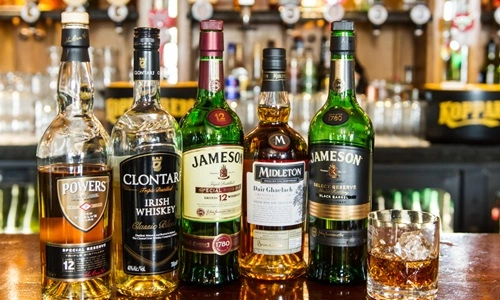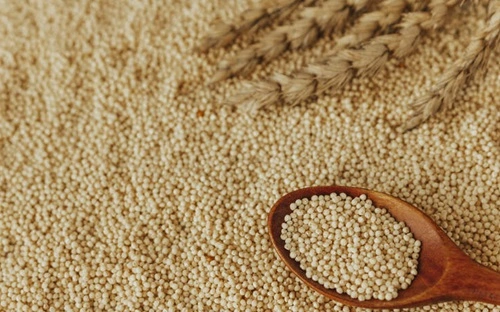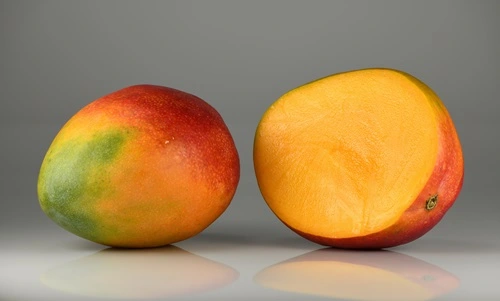Whiskey, a globally cherished spirit, is produced in various styles and traditions that differ by region. Two of the most popular and celebrated varieties are Irish whiskey and bourbon. While both fall under the umbrella of whiskey, they are distinct in terms of their production process, ingredients, flavor profiles, and geographical origins.
This article delves into the difference between Irish whiskey and bourbon, exploring their unique characteristics, histories, production methods, and cultural significance.
What Is Irish Whiskey?

Irish whiskey is a type of whiskey produced in Ireland. Known for its smooth and light profile, it has a rich history dating back to the 12th century, making it one of the oldest whiskey traditions in the world.
Key Characteristics of Irish Whiskey:
- Geographical Origin: Must be produced in Ireland.
- Ingredients: Made primarily from malted and unmalted barley.
- Distillation Process: Typically triple-distilled, which contributes to its smoothness.
- Aging: Aged for a minimum of three years in wooden casks.
- Flavor Profile: Light, smooth, and slightly sweet with hints of fruit, vanilla, and floral notes.
Popular Types of Irish Whiskey:
- Single Malt Irish Whiskey: Made from 100% malted barley in a single distillery.
- Pot Still Irish Whiskey: Unique to Ireland, using both malted and unmalted barley.
- Blended Irish Whiskey: A mix of pot still, malt, and grain whiskeys, offering versatility and affordability.
- Grain Irish Whiskey: Made primarily from corn or wheat, with a lighter taste.
What Is Bourbon?
Bourbon is a distinct type of American whiskey, often associated with Kentucky, although it can be produced anywhere in the United States. Its sweet, full-bodied flavor has made it a staple of American culture.
Key Characteristics of Bourbon:
- Geographical Origin: Must be produced in the United States, with Kentucky being the most iconic region.
- Ingredients: Made from a mash bill that contains at least 51% corn, with the remainder typically consisting of rye, barley, or wheat.
- Distillation Process: Usually distilled twice, often in column stills.
- Aging: Aged in new charred oak barrels, which impart a deep, smoky, and caramel flavor.
- Flavor Profile: Rich, sweet, and bold, with notes of vanilla, caramel, oak, and spice.
Popular Types of Bourbon:
- Straight Bourbon: Aged for at least two years with no additives.
- Wheated Bourbon: Uses wheat instead of rye, offering a smoother, sweeter taste.
- Rye Bourbon: Includes rye in the mash bill for a spicier flavor.
- High-Proof Bourbon: Bottled at higher alcohol content, delivering a robust experience.
Key Differences Between Irish Whiskey and Bourbon
| Aspect | Irish Whiskey | Bourbon |
|---|---|---|
| Origin | Must be produced in Ireland. | Must be produced in the United States. |
| Main Ingredient | Malted and unmalted barley. | At least 51% corn, with other grains like rye, wheat, or barley. |
| Distillation Process | Triple-distilled for smoothness. | Typically double-distilled for a bolder flavor. |
| Aging | Minimum of three years in wooden casks. | Aged in new charred oak barrels, no minimum time for non-straight bourbon. |
| Flavor Profile | Light, smooth, and slightly sweet with fruity notes. | Bold, rich, sweet, and smoky with hints of vanilla and caramel. |
| Barrels Used | Often reuses barrels, including sherry or wine casks. | Always uses new charred oak barrels. |
| Alcohol Content | Typically around 40% ABV. | Varies but often higher than 40% ABV. |
| Cultural Identity | Deeply tied to Irish heritage and traditions. | Iconic symbol of American history and culture. |
Production Differences
Irish Whiskey
- Mash Bill: Primarily uses barley, often including a mix of malted and unmalted grains.
- Distillation: Triple-distilled in pot stills, resulting in a lighter, smoother spirit.
- Barrels: Aged in a variety of barrels, including those previously used for sherry, port, or wine, adding subtle complexities to the flavor.
- Aging Requirements: Must be aged for at least three years in wooden casks.
Bourbon
- Mash Bill: Requires at least 51% corn, often combined with rye, wheat, or barley.
- Distillation: Typically double-distilled, often in a column still, producing a fuller-bodied spirit.
- Barrels: Must be aged in new, charred oak barrels, which contribute to its distinctive caramel and smoky flavors.
- Aging Requirements: Straight bourbon requires at least two years of aging, but no minimum aging is mandated for standard bourbon.
Flavor Profiles
Irish Whiskey
Irish whiskey is renowned for its smoothness and light-bodied nature. The triple distillation process removes many impurities, resulting in a clean and approachable drink. Common flavor notes include:
- Honey
- Vanilla
- Citrus
- Floral and herbal undertones
- Hints of dried fruit or nuts from sherry cask aging
Bourbon
Bourbon offers a richer, sweeter, and bolder taste due to the high corn content and new charred oak barrels. Its flavor is robust and complex, often featuring:
- Caramel
- Vanilla
- Toffee
- Oak
- Spice (from rye) or softness (from wheat)
Cultural and Historical Significance
Irish Whiskey
- Irish whiskey has a history dating back over 1,000 years, with monks being credited for its early development.
- By the 19th century, it was one of the most popular spirits globally, but political and economic challenges led to its decline.
- In recent decades, Irish whiskey has seen a resurgence, becoming one of the fastest-growing spirits worldwide.
Bourbon
- Bourbon is deeply rooted in American history, particularly in Kentucky, where the limestone-rich water and corn crops created ideal conditions for whiskey production.
- The Bourbon Trail, a popular tourist route in Kentucky, highlights the cultural and economic importance of bourbon.
- Declared “America’s Native Spirit” by Congress in 1964, bourbon is an iconic symbol of American craftsmanship and tradition.
How to Enjoy Irish Whiskey and Bourbon
Irish Whiskey
- Best enjoyed neat or with a splash of water to enhance its subtle flavors.
- Popular in cocktails like the Irish Coffee or a classic Whiskey Sour.
- Often sipped as a relaxing, everyday drink due to its smoothness.
Bourbon
- Can be enjoyed neat, on the rocks, or with a splash of water.
- A key ingredient in cocktails like the Old Fashioned, Mint Julep, or Manhattan.
- Known for its versatility, bourbon pairs well with savory foods like barbecue or sweet desserts like pecan pie.
Which Should You Choose?
- Choose Irish Whiskey if:
- You prefer a smooth, light-bodied drink with subtle flavors.
- You’re new to whiskey and want a more approachable option.
- You enjoy heritage-rich spirits with a long-standing history.
- Choose Bourbon if:
- You prefer a bold, sweet, and robust flavor.
- You want a spirit that stands out in cocktails.
- You’re interested in exploring American whiskey traditions.
Conclusion
While both Irish whiskey and bourbon are beloved members of the whiskey family, they offer distinctly different experiences. Irish whiskey is smooth, light, and approachable, reflecting the traditions and heritage of Ireland. On the other hand, bourbon is bold, sweet, and full-bodied, embodying the rich history and craftsmanship of the United States.
Understanding the difference between Irish whiskey and bourbon allows whiskey enthusiasts to appreciate the unique qualities of each and choose the one that best suits their preferences or occasions. Whether sipping on the smoothness of Irish whiskey or savoring the robust flavors of bourbon, both are excellent choices that showcase the diversity and artistry of whiskey-making.


